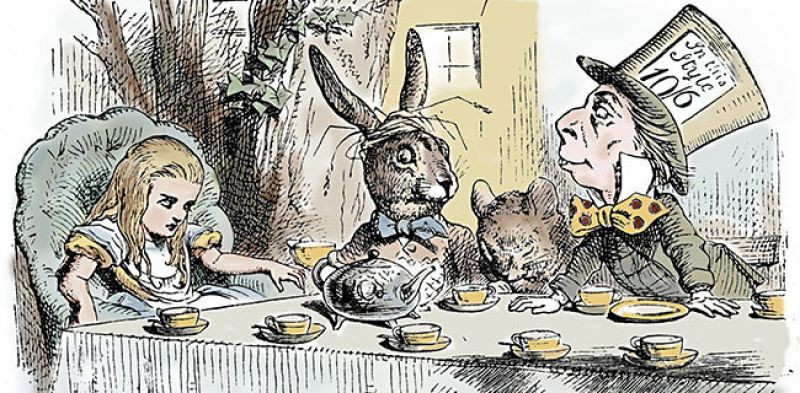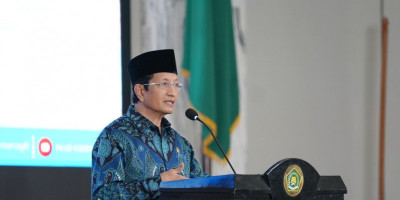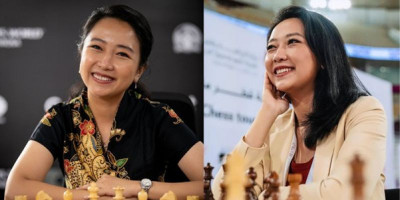PADA masa karantina saya memperoleh kesempatan untuk secara lebih cermat menyimak kembali koleksi buku di perpustakaan pribadi. Ternyata di rak buku perpustakaan pribadi, saya menemukan cukup banyak mahakarya Lewis Carrol.
Mungkin akibat tanggal dan bulan kelahiran (27 Januari) sama dengan saya, meski beda 117 tahun dan juga beda lokasi kelahiran, secara naluriah saya tertarik pada Charles Lutwidge Dodgson sebagai ilmuwan matematika alumnus Universitas Oxford, Inggris.
Di saat sedang tidak mengajar matematika, Dodgson gemar menulis dongeng untuk anak-anak dengan menggunakan nama samaran Lewis Carroll.
Satu di antara dongeng mahakarya Lewis Carroll yang menjadi sangat popular adalah “Alice In Wonderland” yang telah diangkat menjadi film layar lebar oleh para mahasineas kelas langitan seperti Walt Disney dan Tim Burton.
Pemikiran Matematikal
Akibat benak kerap dipadati pemikiran matematikal, maka wajar Lewis Carroll kerap menyelundupkan pemikiran matematemikal ke dalam mahakarya dongengnya.
Misalnya di dalam kisah “Alice in Wonderland” terselip episode sebagai berikut (mohon maaf, agar tidak keliru menerjemahkan sehingga sukma maknanya lenyap maka saya muat sesuai aslinya dalam bahasa Inggris):
“I’m sure I’m not Ada,” she said, “for her hair goes in such long ringlets, and mine doesn’t go in ringlets at all; and I ’m sure I can’t be Mabel, for I know all sorts of things, and she, oh! she knows such a very little! Besides, she’s she, and I’m I, and-oh dear, how puzzling it all is! I’ll try if I know all the things I used to know. Let me see: four times five is twelve, and four times six is thirteen, and four times seven is-oh dear! I shall never get to twenty at that rate! However, the Multiplication Table don’t signify“.
Transformasi Geometris
Dodgson alias Carroll menyerang teori transformasi bentuk geometris Jean-Victor Poncelet di dalam episod Alice in Wonderland yang berkisah tentang sesosok bayi berbentuk babi sebagai berikut:
The baby grunted again, and Alice looked very anxiously into its face to see what was the matter with it. There could be no doubt that it had a very turn-up nose, much more like a snout than a real nose; also its eyes were getting extremely small, for a baby: altogether Alice did not like the look of the thing at all, “ "but perhaps it was only sobbing,” she thought, and looked into its eyes again, to see if there were any tears. No, there were no tears. “If you’re going to turn into a pig, my dear,” said Alice, seriously, “I’ll have nothing more to do with you. Mind now!” The poor little thing sobbed again, (or grunted, it was impossible to say which,) and they went on for some while in silence. Alice was just beginning to think to herself, “Now, what am I to do with this creature when I get it home?” when it grunted again, so violently, that she looked down into its face in some alarm. This time there could be no mistake about it: it was neither more nor less than a pig.
Tea Party
Atau pada adegan debat ngalor-ngidul di meja Tea Party, Lewis Carroll menyelundupkan diskursus matematikal sebagai berikut:
Alice sighed wearily. “I think you might do something better with the time,” she said, “than waste it in asking riddles that have no answers.” “If you knew Time as well as I do,” said the Hatter, “you wouldn’t talk about wasting it. It’s him.”. “I don’t know what you mean,” said Alice. “Of course you don’t!” the Hatter said, tossing his head contemptuously. “I dare say you never even spoke to Time!”. “Perhaps not,” Alice cautiously replied: “but I know I have to beat time when I learn music.” “Ah! that accounts for it,” said the Hatter. “He won’t stand beating. Now, if you only kept on good terms with him, he’d do almost anything you liked with the clock. “Is that the way you manage?” Alice asked. The Hatter shook his head mournfully. “Not I!” he replied. “We quarrelled last March " " just before he went mad, you know " "” (pointing with his teaspoon at the March Hare,). “And ever since that,” the Hatter went on in a mournful tone, “he won’t do a thing I ask! It’s always six o’clock now.”
Sementara permainan logika yang lazim dalam pemikiran matematika mau pun humorologi, lanjut tampil pada dialog Alice dengan March Hare di Tea-Part:
“Take some more tea,” the March Hare said to Alice, very earnestly. “I’ve had nothing yet,” Alice replied in an offended tone, “so I can’t take more.”. “You mean, you can’t take less,” said the Hatter: “it’s very easy to take more than nothing.”
Sekadar menggaris-bawahi kedekatan Lewis Carroll dengan matematika, ternyata saya memiliki beberapa buku karya Lewis Carroll terkait matematika berjudul antara lain “Pillow Problems”, “A Tangled Tale”, “Symbolic Logic”, “Game of Logic” yang tergabung pada siklus “The Mathematical Recreations of Lewis Carroll”. ![]()
Penulis adalah pembelajar sastra dan matematika














KOMENTAR ANDA